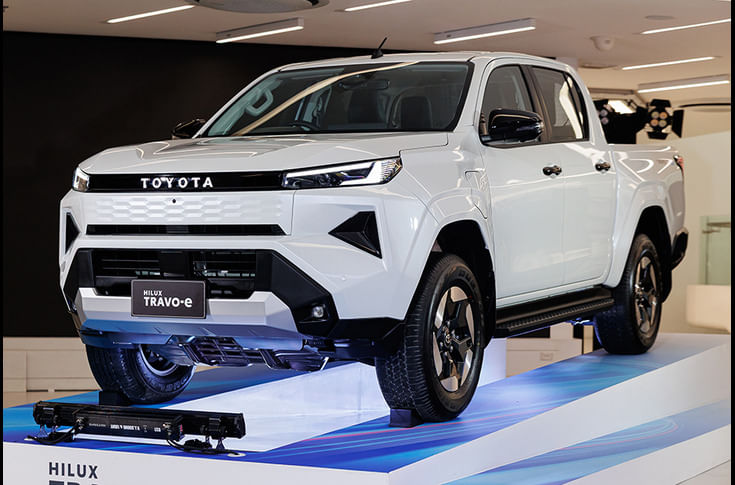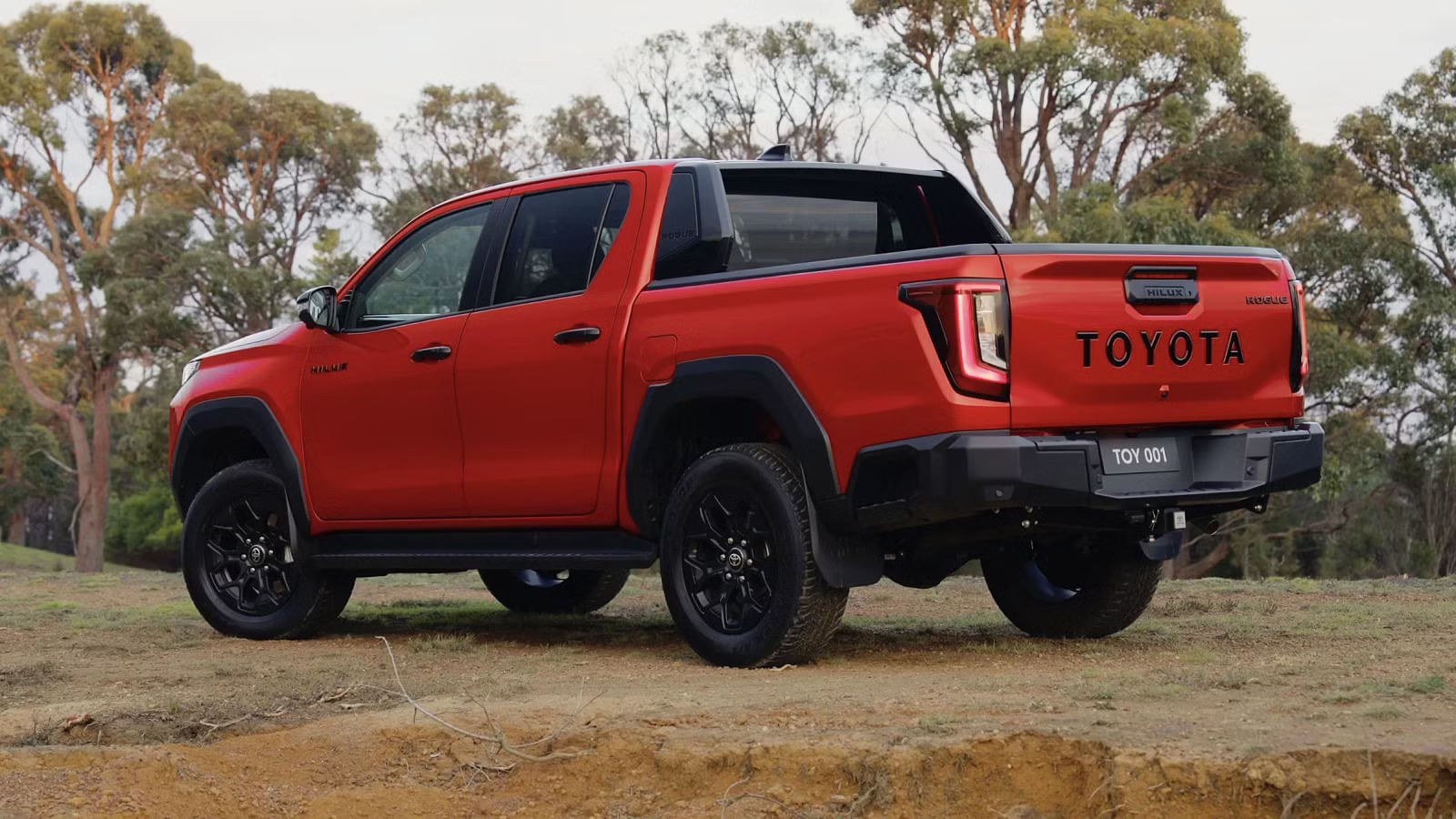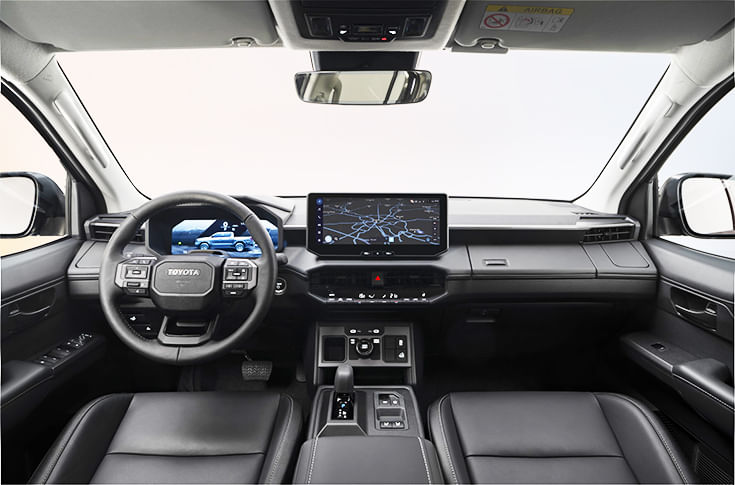Toyota has officially unveiled the ninth-generation Hilux, almost a decade after the previous-gen SUV was revealed. The new model brings a complete redesign and a thoroughly reworked interior. Additionally, the Hilux line-up now gets a pure-EV powertrain as well, along with conventional petrol and diesel powered options.
The new Hilux lineup is being spearheaded by the Hilux BEV (Battery Electric Vehicle), which was previewed as a concept back in 2022. The Hilux electric features a dual-motor setup powered by a 59.2kWh lithium-ion battery pack, offering a range of around 240km (WLTP). Combined torque output stands at 474Nm, with a payload capacity of 715kg and towing ability of up to 1,600kg.
As far as looks go, the Hilux EV gets a closed-off grille, unique wheel design and a charging port positioned on the front fender. Toyota is also simplifying the lineup by dropping single- and extra-cab variants, with the double-cab body style now becoming standard across the line-up.
Overall, the new Hilux adopts a tougher, more angular aesthetic inspired by Toyota’s larger Tacoma and Tundra pickups. Upfront, a large TOYOTA wordmark replaces the traditional logo, flanked by slimmer LED headlights for a more modern and robust face. Around the back, the tailgate features Toyota lettering and a neatly integrated handle below the third brake light. Despite its modernised look, the Hilux looks instantly recognizable and retains the strong, utilitarian proportions that have defined it for decades.
Inside, the cabin has been completely overhauled and now shares interior bits with newer Toyota models like the Land Cruiser Prado and the Land Cruiser FJ. The dashboard layout is upright and geometric, combining digital sophistication with Toyota’s trademark durability. It features twin 12.3-inch screens complemented by physical buttons for climate and 4WD controls. The new Hilux also gets over-the-air update capability, wireless phone charging, rear USB ports and a wide suite of Toyota Safety Sense features such as blind spot monitoring, Safe Exit Assist and Emergency Driving Stop System.
As far as conventional powertrain options go, the proven 2.8-litre turbo-diesel engine returns with (MHEV) mild-hybrid assistance, offering a payload capacity of 1,000kg and a towing ability of 3,500kgs which makes it significantly more capable than the Hilux electric. For select markets Toyota will also offer non-electrified 2.8-litre diesel and 2.7-litre petrol options. Apart from these powertrain options, Toyota has also confirmed that a hydrogen fuel cell version of the Hilux is scheduled to make its global debut in 2028.
Built across six countries and sold in over 180 markets, the Hilux remains one of Toyota’s most popular nameplates, with more than 21 million units sold since its debut in 1968. As far as India goes, the current-gen Hilux has been on sale and it has its own cult following. Expect the new Hilux to make its way in India in the future. Additionally, Toyota is also readying a mass market pickup for India based on the Land Cruiser FJ, which will sit below the Hilux.
Source: Hilux Overland and Hilux BEV image from Headlight Mag Thailand
